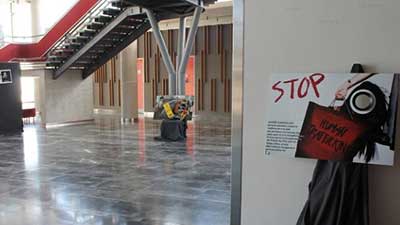Date: 30/12/2022
Relevance: GS-2: Welfare schemes for vulnerable sections of the population by the Centre and States and the performance of these schemes; mechanisms, laws, institutions and Bodies constituted for the protection and betterment of these vulnerable sections.
Key Phrases: Prevention, Care, Rehabilitation Trafficking, Legislation, Survivors, CBR, Reintegration, Discrimination.
Context:
- The Trafficking in Persons (Prevention, Care and Rehabilitation) draft Bill released in 2021 is being considered one of the most comprehensive documents on the prevention of trafficking.
- However, the bill leaves several issues unanswered, as it provides for the rehabilitation, but it does not extend the relief beyond shelter homes.
Key Highlights:
- The ITPA (The Immoral Traffic Prevention Act) and IPC Section 370, mention rehabilitation of trafficked women and children in institutional care as a response to a victim support system.
- However, government schemes governing bonded labour only provide monetary compensation without any healthcare or counselling services.
- The current response to the rehabilitation of trafficked persons adheres to a linear process but aftercare or reintegration services in communities are not prioritised by the system.
Definition of Rehabilitation:
- The draft of Trafficking in Persons (Prevention, Care and Rehabilitation) Bill 2021, defines rehabilitation to include all processes of restoring the physical, psychological, and social well-being of a victim.
- It also includes protection, access to education, skill development, healthcare, psychological and physiological support, medical services, economic empowerment, legal aid and assistance, safe and secure accommodation.
- The Bill mentions that these services will be available in protection and rehabilitation homes built for providing immediate rehabilitation of trafficked victims (women and children only) for a defined period post-rescue.
- This is a welcome change from the last Trafficking of Persons (TOP) Bill 2018 which had prescribed no definite timeline for which a survivor could be kept in protection homes.
What does human trafficking in India look like?
- Labor Trafficking In India: More than half of the victims are
in forced or bonded labor working 12 or more hours a day, trapped in a
cycle they literally can escape.
- COVID-19 increased the issue of bonded labor, as traffickers lured the unemployed with cash advances, only to trap them in the cycle of debt bondage.
- Sex Trafficking In India: The second most prevalent type of trafficking is sex trafficking. (Forced marriage, forced begging, and forced criminal activity are other forms of human trafficking found in India.)
- The Global Slavery Index estimates that 8 million trafficking victims live within India’s borders.
Issues That Need to be Addressed In the Draft Bill:
- Firstly, the definition is open to interpretation.
- The Bill states these services would be provided under rehabilitation.
- It gives the impression that the provision of such services would be largely restricted to institutional-based protection and rehabilitation homes, which can make survivors vulnerable to discrimination.
- The Bill does not address support services and mental healthcare for the survivors, or training designed for skill development.
- Secondly, the term ‘reintegration’ is not defined,
resulting in ambiguity.
- The fact that law enforcement officials do not hold social welfare organisations accountable for monitoring and assisting with the reintegration of survivors demonstrates their negligence.
Way Forward:
- The Juvenile Justice Act and The Protection of Women from Domestic Violence Act, of 2005, have outlined provisions of non-institutional care based on Community based Rehabilitation (CBR) approach.
- CBR is cost-efficient, effective, and decentralized and hence it is more impactful. It helps in the psychological recovery of survivors from PTSD, depression, and anxiety much more effectively than counselling services in shelter homes.
- Survivors should be able to speak up about their own rehabilitation demands like access to free healthcare, quality mental health infrastructure, education, and financial empowerment.
Conclusion:
- Human trafficking traumatises innocent lives irrespective of gender and age. People from marginalised communities are enslaved for commercial gains and often face violence and abuse at the hands of their captivators.
- Holistic rehabilitation and societal reintegration remain a dream due to a multitude of laws governing different forms of trafficking.
- It is, thus, crucial to ensure a legislation that addresses rehabilitation of the survivors in an integrated manner.
Source: Business Line
Mains Question:
Q. Holistic rehabilitation and societal reintegration remain a dream due to a multitude of laws governing different forms of trafficking. Comment (150 words).






















